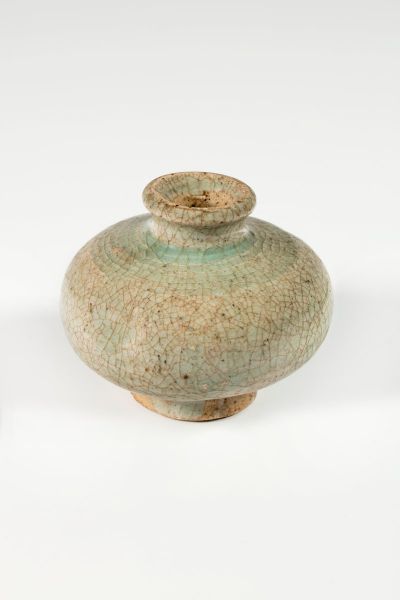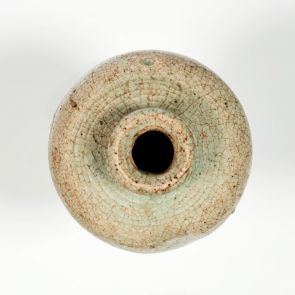
Drop-shaped jarlet
Sawankalok ceramics. Thick earthenware vessel, originally greyish brown, covered with a greenish-grey crackled glaze. The funnel base of the small sized, depressed spherical jar vase in the image is unmuddied.
The former town of Sawankhalok in northern and central Thailand saw an extraordinary development of ceramics from the 14th to the mid-16th century.
This was in part due to the sudden ban on the export of Chinese ceramics in 1371, during Ming dynasty rule. It was at this time that Vietnamese and Thai ceramics took the place of Chinese ceramics in Southeast Asian markets.
Typical pieces of the type are celadon glazed ceramics, learned from Chinese masters, but other types of mazes also existed. The pieces that can be found today were partly found on site, partly as cargo from sunken shipwrecks.
The former town of Sawankhalok in northern and central Thailand saw an extraordinary development of ceramics from the 14th to the mid-16th century.
This was in part due to the sudden ban on the export of Chinese ceramics in 1371, during Ming dynasty rule. It was at this time that Vietnamese and Thai ceramics took the place of Chinese ceramics in Southeast Asian markets.
Typical pieces of the type are celadon glazed ceramics, learned from Chinese masters, but other types of mazes also existed. The pieces that can be found today were partly found on site, partly as cargo from sunken shipwrecks.
